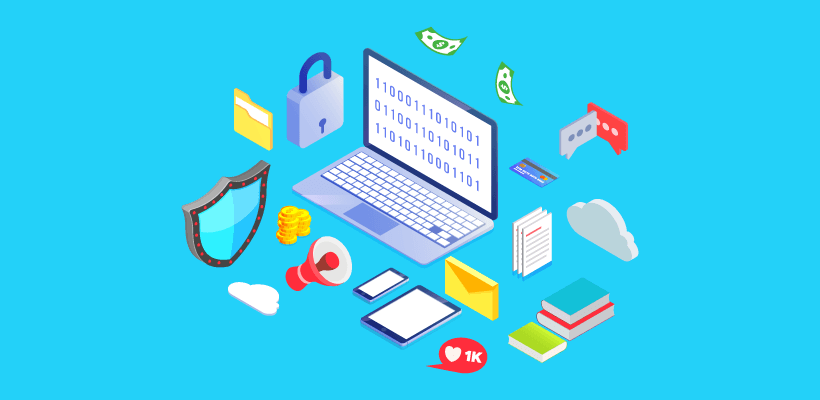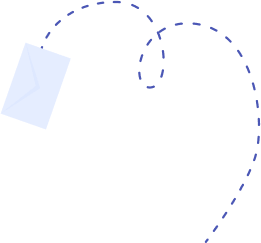What costs are involved in having a website?
Website's total cost of ownership (TCO)
A website's cost of ownership is the total amount of money paid for it, during its entire lifespan. It includes the initial purchase price, and all operating costs.
Many people think of a website as a single entity. In reality though, a website is a combination of many smaller services, each of which is billed separately.
A website's initial development includes not only its design and programming, but also services such as branding, copywriting, graphic design and search engine optimisation (SEO).
To publish it on the Internet, you'll need a domain and hosting account. Periodic maintenance will be required to ensure it's updated and running smoothly. Marketing efforts will help drive traffic to it and generate leads.
Depending on your business goals, you may want to prioritise some of these services, so it's important to consider all their costs when planning your budget.
In this article, we explain the costs of the most common services involved in the creation and day-to-day operation of a successful and rewarding website.

Development of the website
The development of a website may involve several phases, depending on the website's type and complexity. There are roughly three phases:
- Planning – In this first step, project managers study the project's brief and technical specifications, and research the target audience, competitors, etc. Then they plan the website, based on the gathered information.
- Design – During this phase, designers build initial wireframes, and then full user interfaces, which aim to enable the previously planned goals, create a good user experience, and stay true to the company's branding.
- Programming – Web developers build the website, based on its planned features and design. Once development is finished, the website is tested and deployed on the server.
Complex websites, such as web applications, normally entail larger investments and higher stakes, so they require better planning, and go through more phases of development.
Smaller websites, such as brochure websites, are fairly straightforward and therefore can go through a simpler and more economical process.
Domain name
The domain name is your website's address on the Internet. These addresses are unique, and can be purchased from domain registrars.
Domain names can be puchased for one or more years, and have to be renewed when their subscription expires, otherwise they become available for someone else. In that sense, we can think of them as being rented.
A domain name's extension, like .com or .al, is called TLD, and affects its price. For example, at the time of writing this article, a .com domain costs around $10/year and a .new domain costs around $500/year!
Hosting account
Hosting is the service which makes your website accessible from the Internet. A hosting account gives you space on a server, where you can place your website's files. After your website is placed on the server, you connect your domain to it, and when people visit your website's address, they are shown your website.
Hosting services are normally paid monthly, but there can be discounts for long term subscriptions. Prices vary depending on provider, the type of hosting, and server specifications.
A small business website with little traffic won't spend much on hosting. A popular website on the other hand, will likely have hosting as its main operating expense.
Website maintenance
Website maintenance refers to tasks required to be carried out periodically, to keep your website updated and in good working order.
It can involve a wide and diverse range of work, such as content updates, code updates, tech support, security monitoring, server configuration and backups management.
Maintenance costs depend on the size and complexity of your website, and are usually charged on a monthly or yearly basis.
Branding
Your brand identity expresses the mission and values of your company, and distinguishes you from competitors. Your company's website should faithfully represent its brand.
Depending on your business type and budget limits, you can choose to create basic branding, that would typically include a logo and a choice of fonts and colours, or a full brand identity, which would also include elements such as the brand's personality, tone of voice, copywriting rules, imagery specifics, etc.
Branding is largely a creative field, so perhaps more so than anything else on this list, its cost will depend on the skill and experience of the person who's working on it.
Content creation
From time to time you'll need to create new content for your website. Well-written content communicates your message clearly, compels potential clients, and represents your business with dignity.
You are the best person to create this content, but writing effective text takes time, and can pull you away from the more important task of running your business.
A professional copywriter can help create content unique to your business, while using persuasive language to capture your audience's attention.
Content writing is usually billed per word, and prices vary depending on niche.
Images and graphics
You must have a right to use any images or graphics that are displayed on your website! If you do not have your own images, you can use royalty-free ones, or buy professional stock imagery. In any case, you will need to have a license for their use.
If the images need to be edited, that could be an additional cost. Custom graphics created specifically for you by a designer, will normally incur a fee too.
This could be a significant cost for websites which make heavy use of imagery, so it's important to find a cost-effective source for them. Professional stock images are usually sold either per image, or through monthly or yearly subscriptions which let you download in bulk.
Search engine optimisation (SEO)
SEO is a set of practices applied to a website, to help it rank higher in search results.
When a person uses a search engine, they are actively looking for information. It's obvious that if they are looking for your product, and your website shows up in the first few results, that is a massive success for your business!
A SEO professional can help you reach a better ranking position in search results, and consequently expand your client base and sell more products.
SEO is an ongoing process, and is usually charged monthly or yearly. Results may come after some time, and they are not guaranteed to begin with. Despite that, it's worth considering because of its significant potential.
Advertising
An effective marketing strategy is essential for a business to be successful. Your website will normally be a focal point of that effort, so you might set aside a budget to advertise it.
There are many online and offline possibilities when it comes to advertising, such as pay-per-click or banner ads, brochures, radio or TV ads, etc. Advertising costs depend on their type and volume.
Cost of doing it yourself (DIY)
Many of the services presented above can be carried out in a DIY fashion, and you might think that you will be saving costs, if for example you create your own branding, write your own copy, or handle website maintenance by yourself.
There is a double risk in doing so, however! Unless you have some experience in these fields, you will likely not do a good job, therefore creating a bad image for your company.
In addition, should you accidentally mess things up, you will incur the additional cost of fixing the problems you created.
Summary
Every website, regardless its size, is a complex system. In order for it to be successful and an asset to your business, you will likely need to invest in a number of professional services, both during development and after the website is online.
It's a good idea to take all these costs into consideration when planning a new website, so that you are prepared in advance for its long-term operation.
